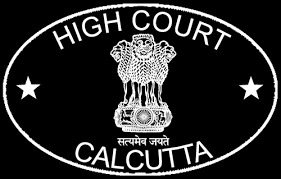A.L. Bahri, J.@mdashThis appeal has been preferred by Ujagar Singh and others, proprietors of Village Naggal, teshil and District Ropar, in a case for apportionment of compensation fixed for the acquired land. The matter was referred by the Collector to the District Judge, Ropar, who after inviting pleadings of the parties --Ujjar Singh and others on the one side and Gram Panchayat of village Naggal on the other side and after framing the necessary issue, decided that it was the Gram Panchayat-respondent in this appeal who was entitled to compensation for the land measuring 47 Kanals 11 Marias as vesting in the Panchayat. The decision was made on the evidence of Ujagar Singh and certified copy of the Jamabandi (Exhibit''P-1''). As per evidence of Ujagar Singh this land was twice earlier auctioned by the Gram Panchayat in the years 1981 and 1982. Reference to the Jamabandi (Exhibit ''P-1'') would be made later.
2. The contention of learned counsel for the appellant is that as per revenue record (Jamabandi Exhibit ''P 1'') the land in dispute is described as owned as possessed by proprietors and therefore, does not vest in the Gram Panchayat as Shamilat Deh. This contention with respect to the entire land in dispute cannot be accepted.
3. ''Shamilat Deh'' is defined in Section 2 (g) of the Punjab Village Common Lands (Regulation) Act, 1961 (for short ''the Act) as under :--
"2 (g) ''Shamilat Deh'' includes-
(1) lands described in the revenue records as Shamilat Deh excluding abadi deh;
(2) Shamilat tikkas;
(3) lands described in the revenue records as Shamilat tarafs, patties pannas and tholas and used according to revenue records for the benefit of the village community or a part thereof or for common purposes of the village;
(4) lands used or reserved for the benefit of village community including streets, lanes, playgrounds schools, drinking wells or ponds within abadi deh, or gorah deh and :
(4a) xx xx xx
(5) lands in any village described a banjar qadim and used for common purposes of village according to revenue records."
It is not necessary to refer to the entire Section 2 (g) of the Act. The present case depends upon the interpretation of Section 2 (g) (4) of the Act, as reproduced above.
4. The contention of the learned counsel for the appellants is that in order to attract the provisions of Section 2 (g) (4) of the Act, the land must be in the abadi deh or gorah deh to vest as Shamilat Deh in the Panchayat if it is used for the benefit of village community. This assertion as such cannot be accepted. No doubt, land which is within the abadi deh or gorah deh and is used for the benefit of village community including the streets, lanes, playgrounds, schools, drinking wells or ponds, would vest in the Gram Panchayat as Shamilat Deh. However, the land which is outside the abadi deh and is used for the benefit of village community, though recorded in the name of proprietors, would also vest as Shamilat Deh in the Gram Panchayat.
5. The learned counsel for the appellants referred to the decision of this Court in Sudhan and Ors. v. The State of Haryana and Ors. 1981 P.L.J. 256 The said decision cannot be applied to the facts of the case in hand as that was a case where land was reserved for common purposes under the provisions of East Punjab Holdings (Consolidation and Prevention of Fragmentation) Act and the Scheme provided that income of the said land would go to the Panchayat, which position was not accepted by the Court. The land which is reserved for common purposes under the Consolidation Act would not vest in the Panchayat as the same earlier belonged to proprietors.
6. The other decision relied upon by the learned counsel for the appellants is of this Court in Kala Singh v. Commissioner, Hissar Division 1984 P.L.J. 169. The position in this case was also the same as in Sudhan''s case (supra). The Division Bench held that the land reserved for common purposes during consolidation proceedings would not be Shamilat Deh as defined u/s 2 (g) of the Act and the Gram Panchayat, thus, could not file an application u/s 7 of the Act. This decision again is not applicable to the facts of the said case in hand.
7. The present case relates to apportionment of compensation of Rs. 29,528.55 of land measuring 47 Kanals 11 Marlas. During arguments, while making reference to the Jamabandi (Exhibit ''P-1'')t the counsel for the appellant has pressed that the compensation of land of certain Khasra numbers should be paid to the proprietors; meaning thereby that he has not challenged the judgment of the District Judge as a whole. Thus, I would refer to only land of such khasra numbers which have been pointed out. Jamabandi (Exhibit ''P-1'') shows the name of the proprietor as "Jumla Mushtarqa Malqan Hasab Rasad Raqba Khewatwaar". In the column of cultivation the entry is Maqbuja Malqan in respect of following khasra numbers :''-
37/18/1 (3-0)
23/1 (1-3)
24/1 (3-14)
Total of these three khasra numbers come to 7 Kanals 17 Marlas. This entire land is recorded as Gair Mumqin Darar. Obviously, the land covered by these khasra numbers cannot be treated as Shamilat Deh, as defined above. The land is not shown in possession of the Panchayat or used for common purposes. It is recorded in the ownership and possession of the proprietors. Thus, the appellants who claim to be proprietors would be entitled to apportion the compensation of this land according to their share.
8. Rectangle No. 37/23/3 (1-3) though recorded in the name of the proprietors is shown to be in possession of Harijans and the descrip tions of the land is shown as Harijan Dharamshala, Similar is the position with respect to Khasra No. 111. Obviously proprietors are not in possession of land of these two khasra numbers which is used by the Harijans, a village community, and this will not vest in the proprietors (present appellants) to claim compensation. This land would vest in the Panchayat as is used by the village community as such.
9. Land comprising Rectangle Nos. 37/22 (3-5), 23/2 (2-13), 42/2 (3-7), 3 (6-10), 8 (4-8) and 9/1 (0-9) measuring in all 20 Kanals 12 Marlas is, of course, recorded in the ownership of the proprietors as mentioned above, but in the column of cultivation the entry is Mufeed Aam. The nature of the land is described as Gair Mumkin Darar. Since this land is recorded in the revenue record for the benefit of the community, it would vest in the Panchayat as Shamilat Deh as defined in Section 2 (g) (4) of the Act and Panchayat would be entitled to compensation for this land. Similar entry exists regarding Khasra No. 110 (1-0), and Khasra No 112 (0-10) that is Mufeed Aam, This land has been described as Poorian and Guga Maree respectively. This land as per revenue record is in the ownership of the proprietors as such but is used as "Mufeed Aam" and, thus, it would vest in the Gram Panchayat as Shamilat Deh.
10. The dispute is also with respect to land of Rectangle No 49/5. The entire land of Rectangle No. 42/5 is 8 Kanals and is mentioned as Gair Mumqin Darar recorded in the Ownership of Jumla Mushtarqa Malqan and in the column of cultivation entry is Panchayat Farm in Exhibit ''P-1'' Obviously, the land of the khasra number is not in possession of the proprietors and it is used for the community as such; and thus it vests in the Panchayat as Shamilat Deh.
11. The learned counsel for the appellants also claims that compensation for laud comprising in Khasra Nos. 99/1, 138/8, 147/1, and 150 should be paid to the proprietors. No revenue record with respect to these khasra numbers was produced on behalf of the appellants Jamabandi (Exhibit ''P-1) does not make any reference to these khasra numbers and, therefore, the appellants must fail in this respect.
12. For the reasons recorded above, this appeal is partly allowed. The appellants as proprietors would get apportionment of compensation for the l(sic)ano measuring 7 Kanals 17 Marlas according to their share as recorded in the revenue record which would be determined in execution, Regarding the other land, Gram Panchayat would get the compensation. The judgment of the District Judge is modified as above. Parties are left to bear their own costs.

